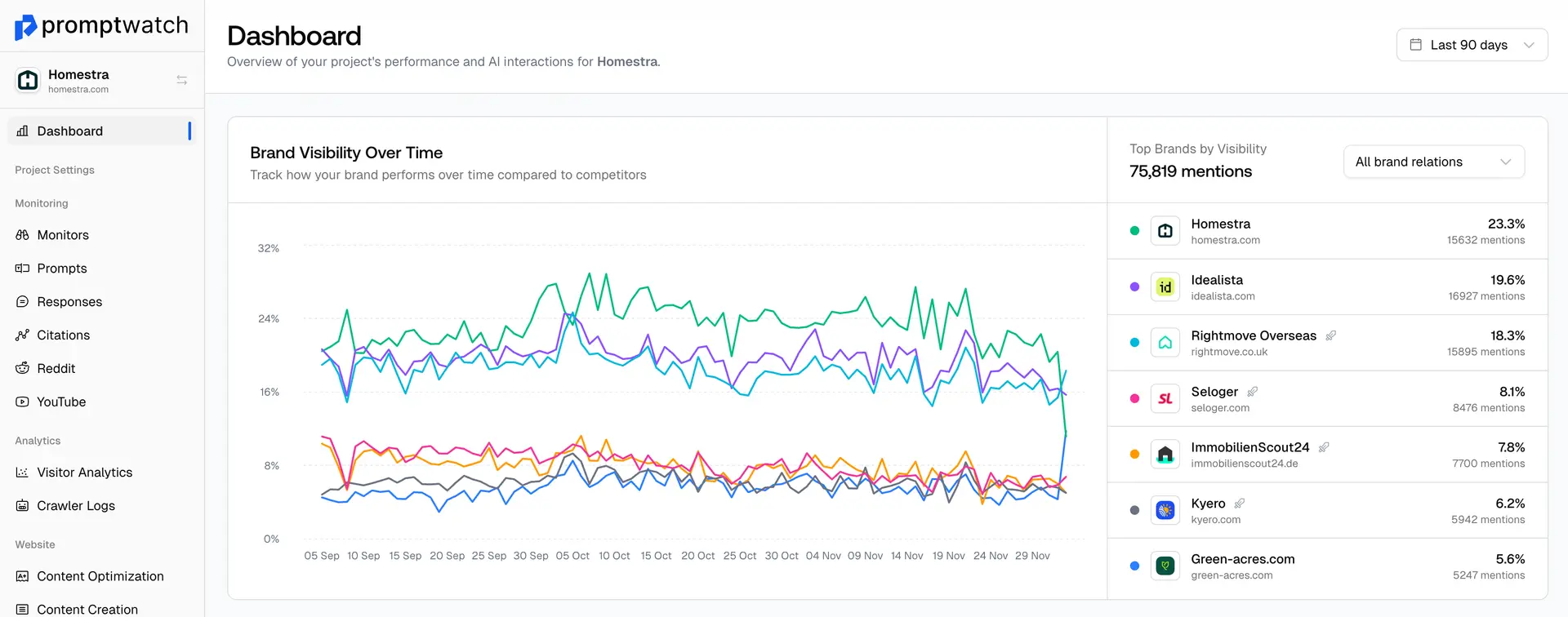Definition
Competitor Analysis is the systematic process of researching and analyzing competitors' marketing strategies, SEO performance, content approaches, and business tactics to identify opportunities, threats, and strategic advantages. In the digital age, this analysis has become increasingly sophisticated, encompassing traditional SEO metrics, AI visibility, social media presence, and emerging channel performance.
Effective competitor analysis involves identifying direct and indirect competitors, analyzing their SEO and content strategies, evaluating their AI presence and citations, assessing their social media and marketing approaches, understanding their customer engagement tactics, and identifying gaps and opportunities in their strategies.
Modern competitor analysis must include AI and GEO considerations. This means analyzing how often competitors appear in AI-generated responses, what topics they're cited for, their presence across different AI platforms, and their overall AI visibility scores. This new dimension of competitive intelligence can reveal opportunities that traditional SEO analysis might miss.
The goal isn't to copy competitors but to understand the competitive landscape, identify underserved opportunities, learn from successful strategies, anticipate competitive moves, and develop differentiated approaches that leverage your unique strengths.
Tools for comprehensive competitor analysis include SEO platforms like SEMrush and Ahrefs for traditional metrics, social listening tools for brand monitoring, AI monitoring platforms like Promptwatch for AI visibility analysis, and content analysis tools for understanding competitive content strategies.
Examples of Competitor Analysis
- A SaaS company analyzing competitors' AI visibility to identify topics where they could establish thought leadership
- An e-commerce brand studying competitors' content strategies to find gaps in product education and comparison content
- A consulting firm analyzing competitors' AI citations to understand which expertise areas are underserved in AI responses
- A local business examining competitors' local SEO and AI presence to identify opportunities for local market dominance
